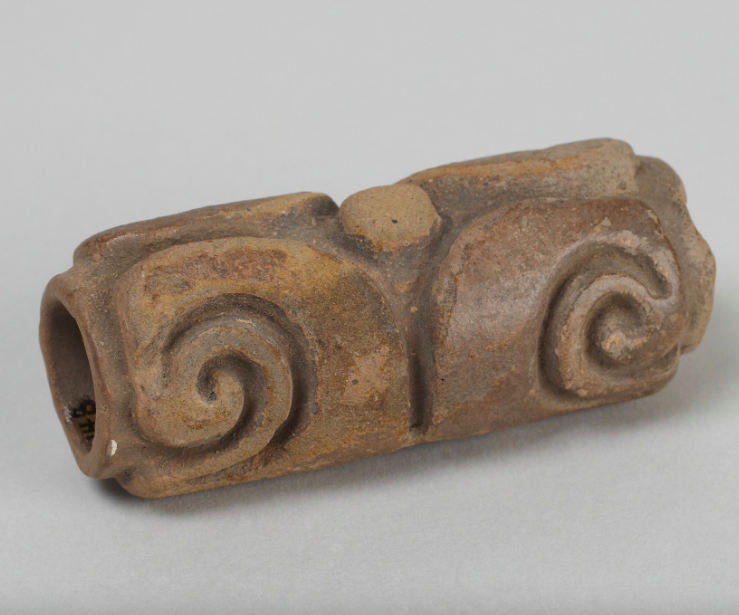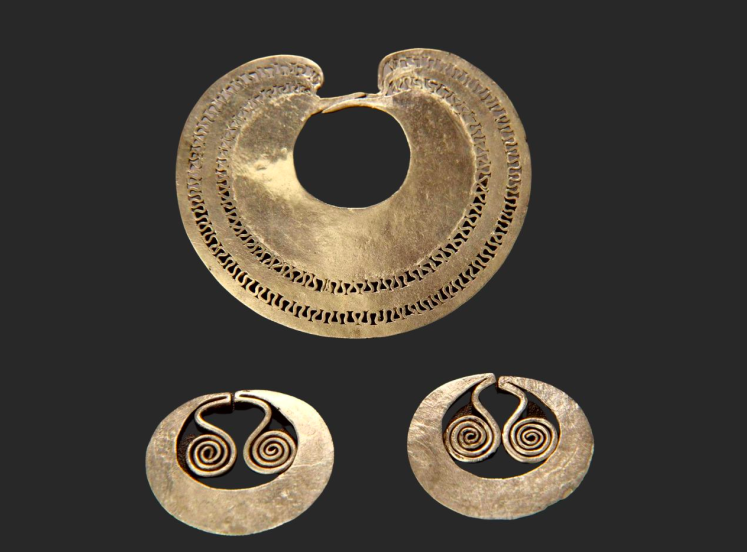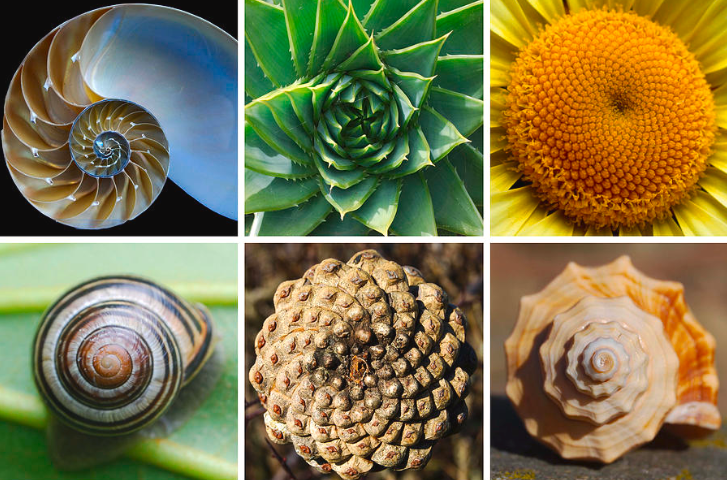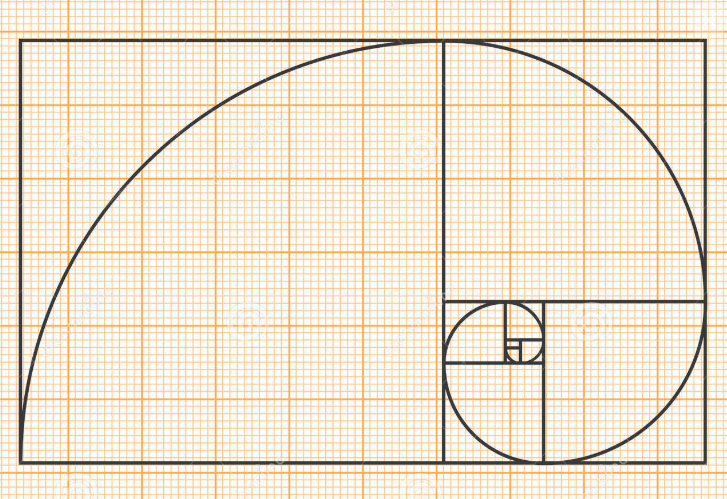Spirals are everywhere
Inca gods are represented by statues but also by symbols, some of which are quite obvious: Inti, the Sun, is a golden disk with rays. It is perhaps more difficult to understand why Pachamama, the Earth goddess, is figured by a spiral.
Spirals were already a common symbol in Prehistoric rock art and their meanings have been much discussed : are they representations of the sun, of the circle of life and death, portals to the spirit world, calendar devices (each portion of the spiral standing for a segment of time)?

The symbol lives on in all cultures around the world: the Celtic triple spirals or triskels, Maori warriors face tattoos, Rwandese Imigongo art…

Spirals appear very often in pre-columbian art but we have to ask ourselves why they have come to be associated with Pachamama.


Spirals as fertility symbols
A spiral is a line beginning from a starting point and progressing in an endless circular movement. Evolution, expansion. However the movement is not anarchic or random, it is regular and obeys rules. And so the spiral is seen as a symbol of energy, vibration but it also has the regularity of life and nature cycles. The bodies of Paleolithic female idols are sometimes marked with spirals, which are the sign of their fertility and vital energy.

Pachamama has all the characteristics of an Earth goddess: she gives life and rules over farming activities that comply with the seasons and cycles of nature.
The coiled snake is a variation of the spiral motif that we can find in many cultures.

However the snake has a special connection to Pachamama. The Earth goddess has a wild side: she dwells in a mountain cave and when humans do not respect her gifts, she changes into a dragon (akin to the snake) and creates Earthquakes. In Christian tradition, the snake is Evil but in many ancient cultures it is ambivalent. Its poison can kill but it can also heal when used properly. Snakes and dragons are deeply connected with the Earth and the Underworld and as such are fertility spirits. In China dragons are frightful beasts but they also bring rain necessary to crops. In the same way, Pachamama can be a terrifying dragon and the old wise serpent harbinger of fertility and prosperity.
A cosmic symbol
Sometimes the spiral is combined with the Chakana symbol. The Chakana is a cross with four branches and three steps leading to each branch. In the middle there is usually an empty circle.

The cross is first of all a stylized representation of the Southern cross constellation. The general structure reminds us of Incan temples with a flight of steps on each of its four sides, thus establishing an analogy between celestial bodies and human creations. The three steps represent the three parts of the world: the upper world, realm of the stars and celestial deities; the middle world, realm of the humans; the lower world or underworld. The four branches symbolize the four cardinal directions, the four seasons, the four elements. The empty circle in the middle is the navel of the universe, an axis mundi, a pole around which the world is organized but also a channel of communication between the different elements, between the celestial and the terrestrial plane. Chakana means bridge or crossing in Quechua.
Sometimes the circle in the middle is filled by a spiral which suggests that Pachamama is involved in the symbolic meanings of the Chakana.


Pachamama is the Earth so she seems to be only one of the four elements or branches along with the moon, the sun and water. But she is also the entire universe, mother of all living things. In Quechua, pacha means earth, soil, land but also world, cosmos, time and space. The Chakana and the spiral are two ways the Incas view the world. The cross presents the image of a structured universe based on symmetry and analogy. All elements are connected. The spiral shows us the world as vibrant energy, nature cycles and Life!
Ars imitatur naturam
Pre-inca and Inca civilizations emerged some 4000 years ago, a period that witnessed the birth of agriculture which created a revolution in the way humans provided food for themselves. The Altiplano was not as dry as it is now and was fit for farming but it needed irrigation and elaborate engineering. The marvelous aqueducts of Nazca are shaped like a spiral and terrace cultivation is structured by concentric circles that remind us of spirals.

This should not surprise us. Spirals are everywhere in Nature : shells, snails, rose petals, vine rolls etc. These naturally perfect geometrical forms have fascinated mathematicians and led to speculations on algorithms and the golden ratio or divine proportion.


Nature leads the way for human inventions. Pachamama spirals may have taught humans how to make the best of a hostile environment.
Pachamama spirals her way into the Constitution
With global warming and climate change, ecology has become a crucial issue for the countries of the Altiplano and Pachamama has become the champion of their battles. A recent article analyzes the concept of the Pachamama. It is a lifestyle that implies a change of attitude towards Nature. Modern societies tend to dominate nature through technology in order to drain her ressources. We have to go back to a time when nature was sacred, when men had a deep connection with their environment.
Pachamama has been mentioned in the constitutions of Ecuador since 2007 and Bolivia since 2006. Nature is now an entity that has rights. Sumak Kawsay sums up the new philosophy. It means to live well, to live together. Some issues are difficult but we must find ways to overlook our individual interests for the common good.
The symbol of Pachamama is a spiral. Time has to be considered like a spiral. The line can move forwards (we have to think of the future) but we can follow the line back to its center (we must consider the past and profit from its lessons). Development must not be linear. You have to sometimes regress to progress.
The law states that:
«Nature or Pachamama, where life is reproduced and occurs, has the right to integral respect for its existence and for the maintenance and regeneration of its life cycles, structure, functions and evolutionary processes».
It is still early to assess what changes the law has brought. We can only hope that the inspirational spiral will not become a dead-end labyrinth!
Sources:
https://archive.org (Article: la Spirale)
https://www.voyages-equateur.com (Symbolic meanings of the Chakana)
Image Source: bradshawfoundation.com, cloudfront.net, precolumbianart4sale.com, wikimedia.org, i.pinimg.com, cdn11.bigcommerce.com, images.nationalgeographic.org, medias.pourlascience.fr, google.com, quora.com, fineartamerica.com
